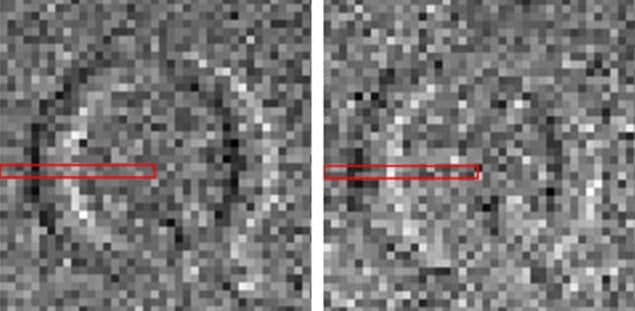
A phenomenon dubbed by Einstein as “spooky” might lead to very real benefits for biologists, thanks to new research by physicists in Japan. They have improved the signal-to-noise ratio of a phase-based microscope by exploiting entanglement – the connectedness between particles that allows a measurement on one of them to instantaneously fix the quantum state of another, no matter how far apart they are. This improved performance, say the researchers, could be particularly useful when studying delicate and transparent samples, such as biological tissue.
The phase of light plays an important role in modern microscopy. Standard optical microscopes record variations in the intensity of light passing through or reflecting off an object, but this approach produces very low-contrast images when the sample under scrutiny is highly transparent. Microscopes that instead exploit phase produce images by recording the interference of light rays that pass through regions of differing refractive index across a sample. Such devices are well suited to imaging living cells, for example, which are both highly transparent and extremely sensitive to intense light.
More signal, less noise
In the latest work, Shigeki Takeuchi and colleagues at Hokkaido University use entangled photons to boost the performance of a “differential interference contrast microscope” (DIM). This type of device splits a laser beam into two new beams that are focused on adjacent points on the plane of the sample. The pair of beams is scanned across the sample – being focused onto one set of neighbouring points after another – and made to recombine and interfere in a suitable detector. In this way, the device reveals the variation of refractive index, and hence composition, of the sample.
Since each photon in a laser beam experiences phase, the signal from a DIM using non-entangled beams scales with the number of photons in the beam (N). As the statistical error associated with counting discrete photons introduces a noise equal to the square root of N, the signal-to-noise ratio in an ordinary DIM is therefore also √N. But if these photons are entangled, each one of them senses the phase N times, thereby multiplying the signal and improving the signal-to-noise ratio by a further factor of √N.
In their experiment, Takeuchi and colleagues used what are known as NOON states – so-called because they are a quantum superposition of N horizontally polarized photons (with “0” photons in the vertical mode) and N vertically polarized photons (with “0” in the horizontal mode). Using these NOON states, the team generated pairs of entangled photons (i.e. where N is 2) to image a letter “Q” etched 17 nm deep in a glass plate. The researchers created pixels with an average of 460 photon pairs and were able to obtain much better contrast than was possible using single (classical) photons (see image above). In fact, the researchers found that the entanglement improved the signal-to-noise ratio of the DIM by a factor of 1.35 – slightly short of the expected value of √2 (i.e. 1.41) because of non-perfect two-photon quantum interference.
NOON a no-no?
Warwick Bowen, a quantum physicist at the University of Queensland in Australia, praises the latest work as “a milestone in quantum measurement and a step towards biological applications”. But he says that the precision achieved by the Japanese group is “far inferior to the state of the art in conventional phase-contrast microscopes”. Rather than sticking with NOON states, he thinks Takeuchi and co-workers might be better off using another form of non-classical light with very low noise levels that is known as “squeezed light”, which can be produced in bright beams and is already used in gravitational-wave detectors.
Takeuchi and colleagues are now building what they dub a “more user-friendly prototype” tailored for biological imaging. But Takeuchi admits that it will be difficult to further increase the number of entangled photons – and so raise the signal-to-noise ratio – using the group’s existing source of entanglement (parametric down conversion from a conventional nonlinear crystal). Using a NOON state with 10 or more photons, Takeuchi says, might instead be done via a special kind of crystal that uses less power and produces smaller optical losses or by using the kind of photonic circuits used in quantum computation. “This is a truly exciting challenge, both in fundamental science and applications,” he adds.
Details of the research are available on arXiv.


